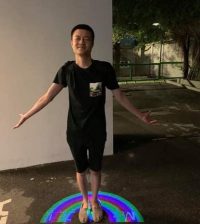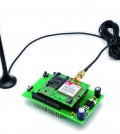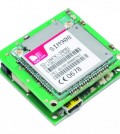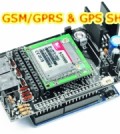- How to Adjust X and Y Axis Scale in Arduino Serial Plotter (No Extra Software Needed)Posted 4 months ago
- Elettronici Entusiasti: Inspiring Makers at Maker Faire Rome 2024Posted 4 months ago
- makeITcircular 2024 content launched – Part of Maker Faire Rome 2024Posted 7 months ago
- Application For Maker Faire Rome 2024: Deadline June 20thPosted 8 months ago
- Building a 3D Digital Clock with ArduinoPosted 1 year ago
- Creating a controller for Minecraft with realistic body movements using ArduinoPosted 1 year ago
- Snowflake with ArduinoPosted 1 year ago
- Holographic Christmas TreePosted 1 year ago
- Segstick: Build Your Own Self-Balancing Vehicle in Just 2 Days with ArduinoPosted 1 year ago
- ZSWatch: An Open-Source Smartwatch Project Based on the Zephyr Operating SystemPosted 1 year ago
XRobots returns with most advanced 3D printed BB-8 Droid yet
James Bruton of XRobots managed to create not one, not two, but three fully-functional and entirely impressive 3D printed BB-8 droids, with each one getting better than the last. Bruton’s first 3D printed BB-8 was based on just two seconds of footage from the very first Star Wars: The Force Awakens trailer. Understandably, he didn’t have very much to go on, and thus designed his BB-8 as a ball-balancing robot. Though we couldn’t possibly describe it as ‘rudimentary’, by Bruton’s standards, he knew it needed work.
After many improvements, the V3 dorid is made by a the 300mm-wide main ball alone consisting of twenty 3D printed parts, each made from ABS on the Lulzbot TAZ desktop 3D printer, and taking 4.5 hours of print time each. Aside from electronics, almost the entirety of the BB-8 is 3D printed, including its Ninjaflex guidewheels. Bruton created the files himself from scratch, without using the widely popular BB-8 Builder’s Club resources.
Though to the untrained eye, V3 might look quite similar to V2, the key differences are in its performance. Bruton made the main ball slightly wider and built in another axis—both of which help to give this BB-8 more dynamic stability and the ability to tip from side to side. “This is basically the ‘brute force’ way of making it stable, it’s using the best part of 900 watts of power peak,” he explained. “If I build any more I’ll attempt a more power efficient side-to-side stabilization method.”
XRobots’ 3D printed BB-8 Version 3 is entirely open source, with CAD and code publicly available on GitHub. Bruton, who is also a Hackaday Prize judge, will be releasing additional information and guides to the XRobots website as his work progresses.
Source: 3ders.org














